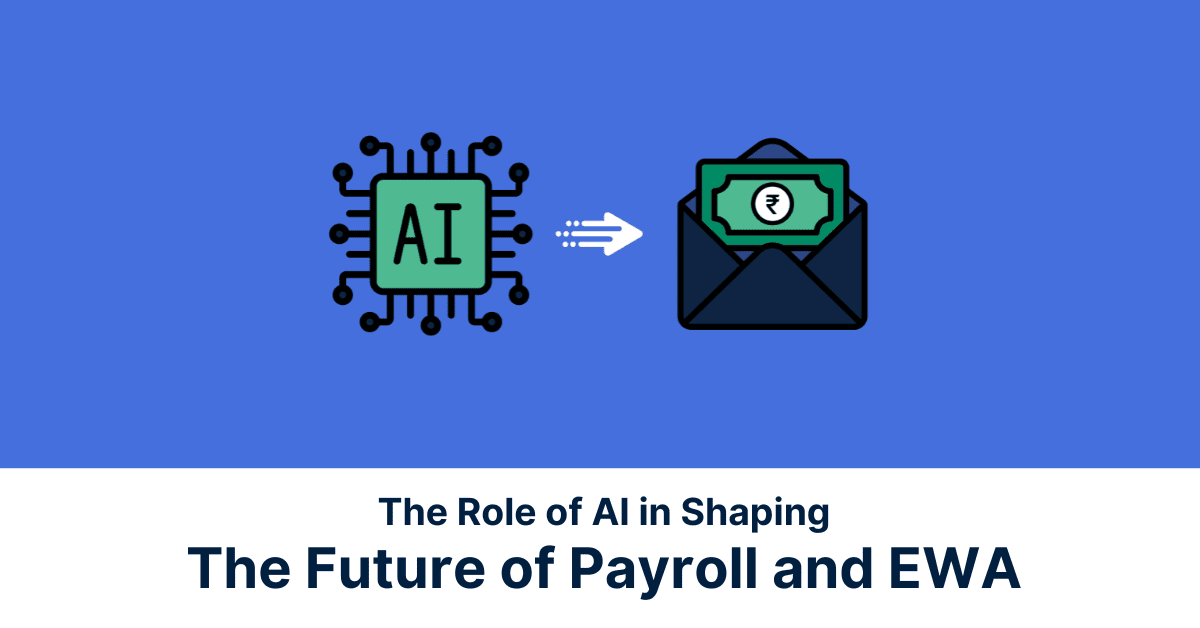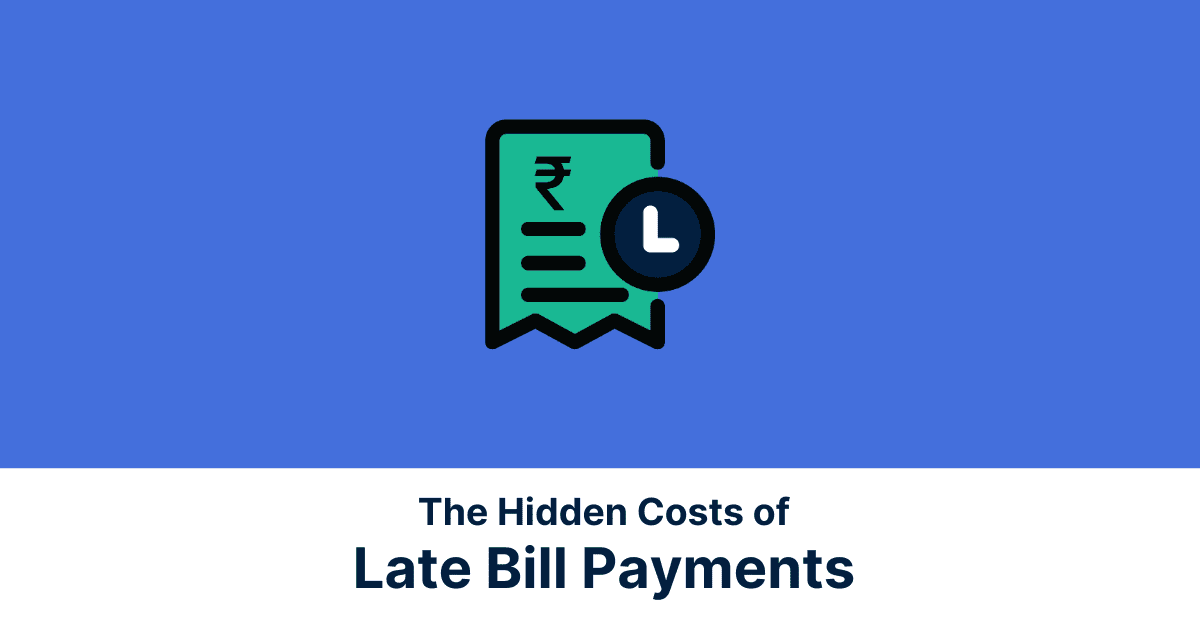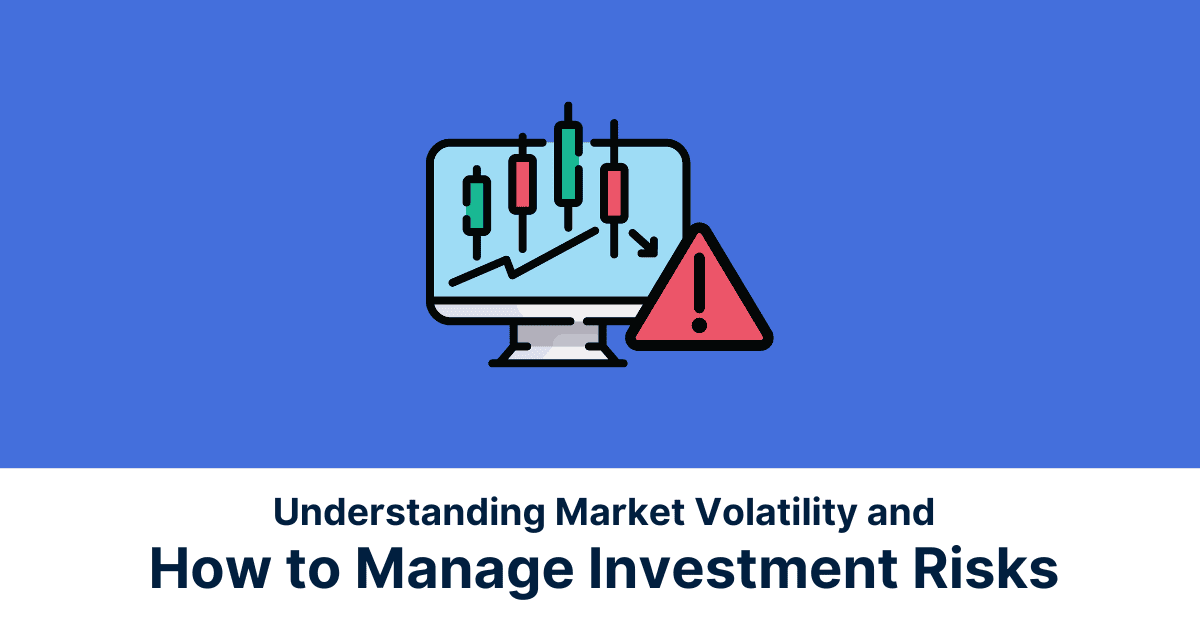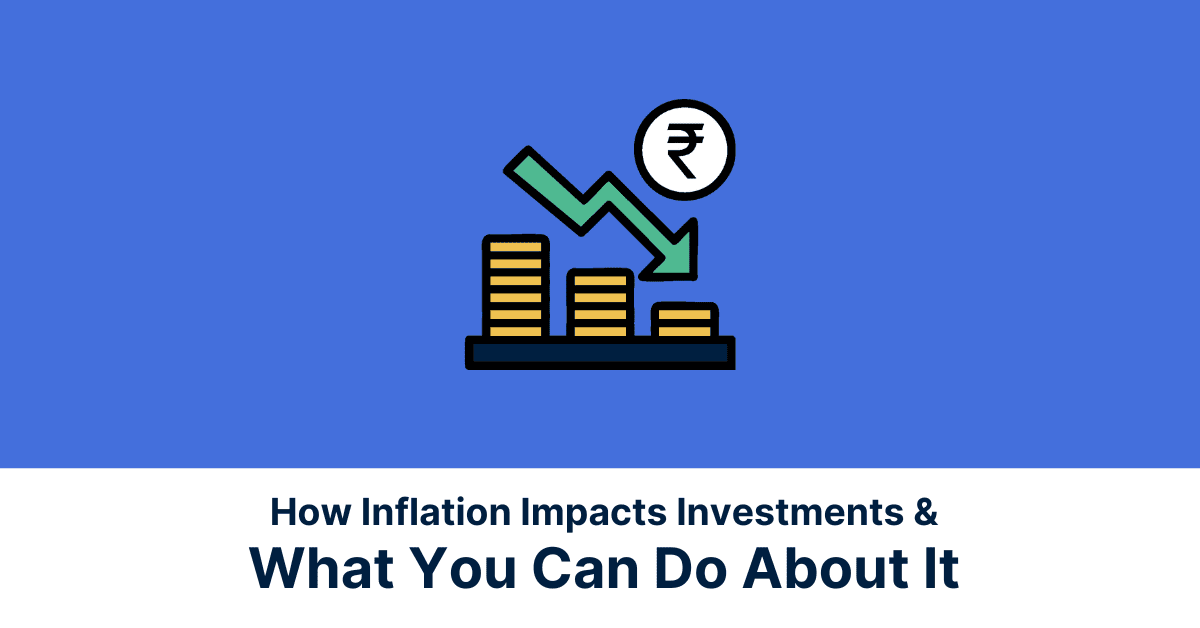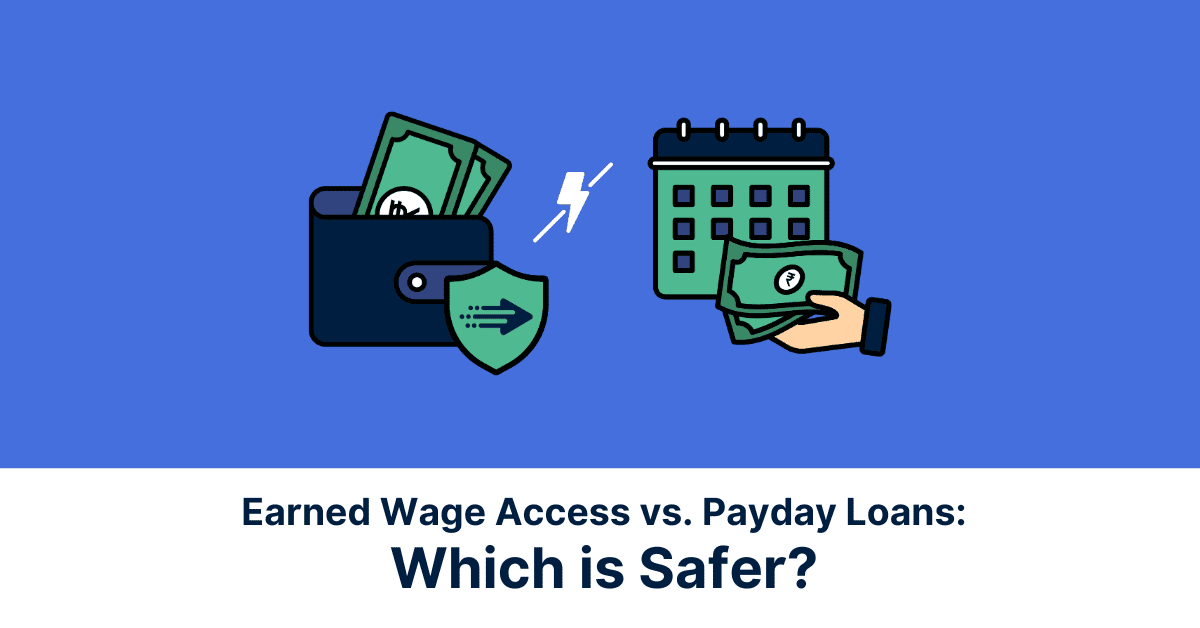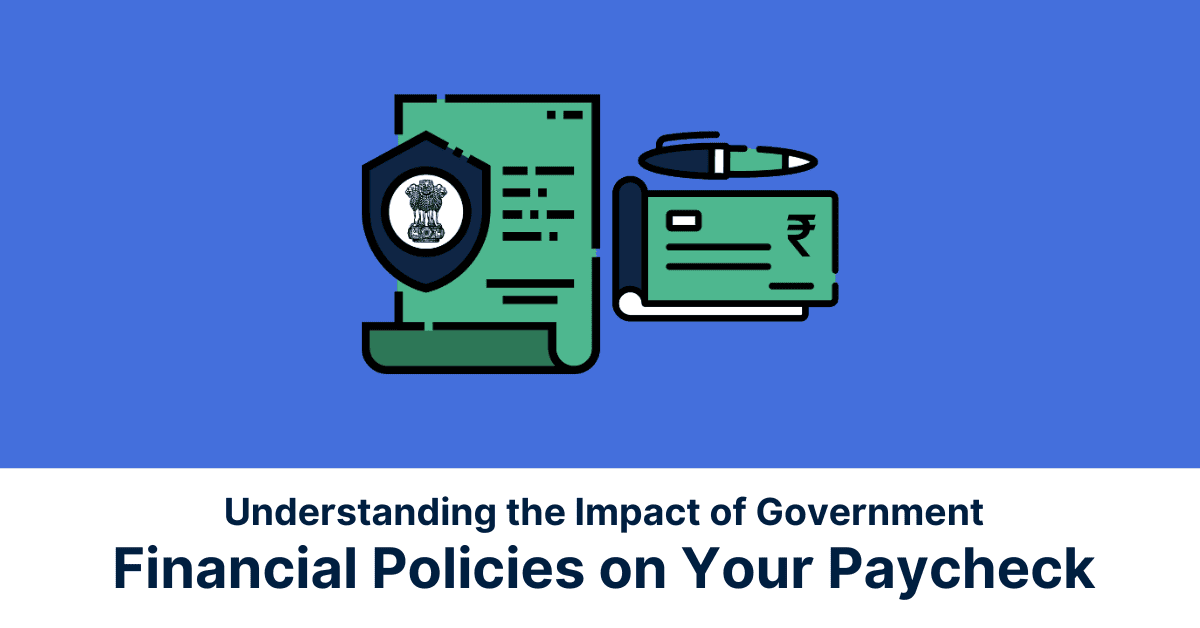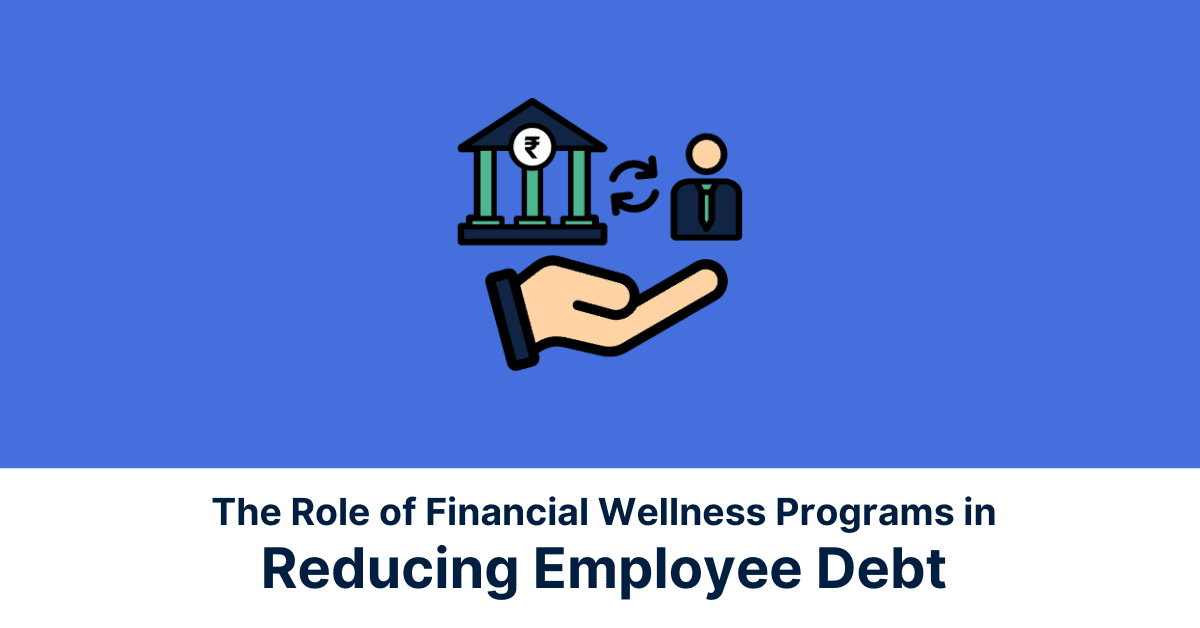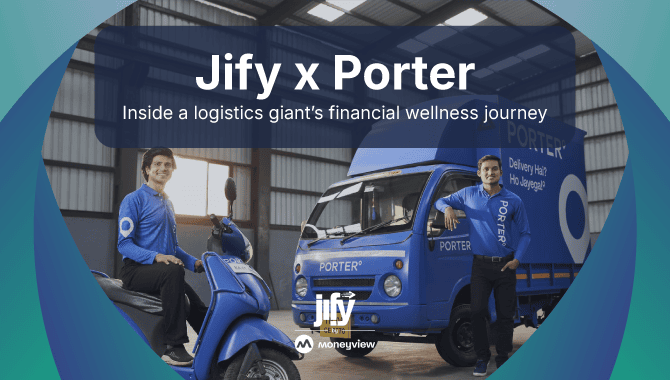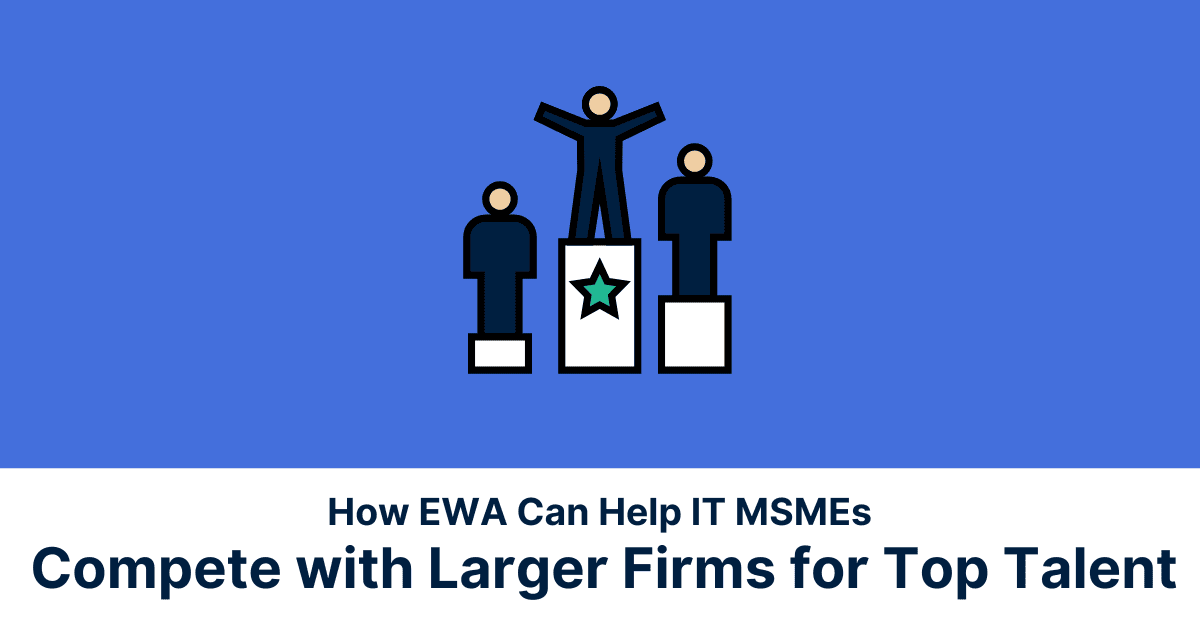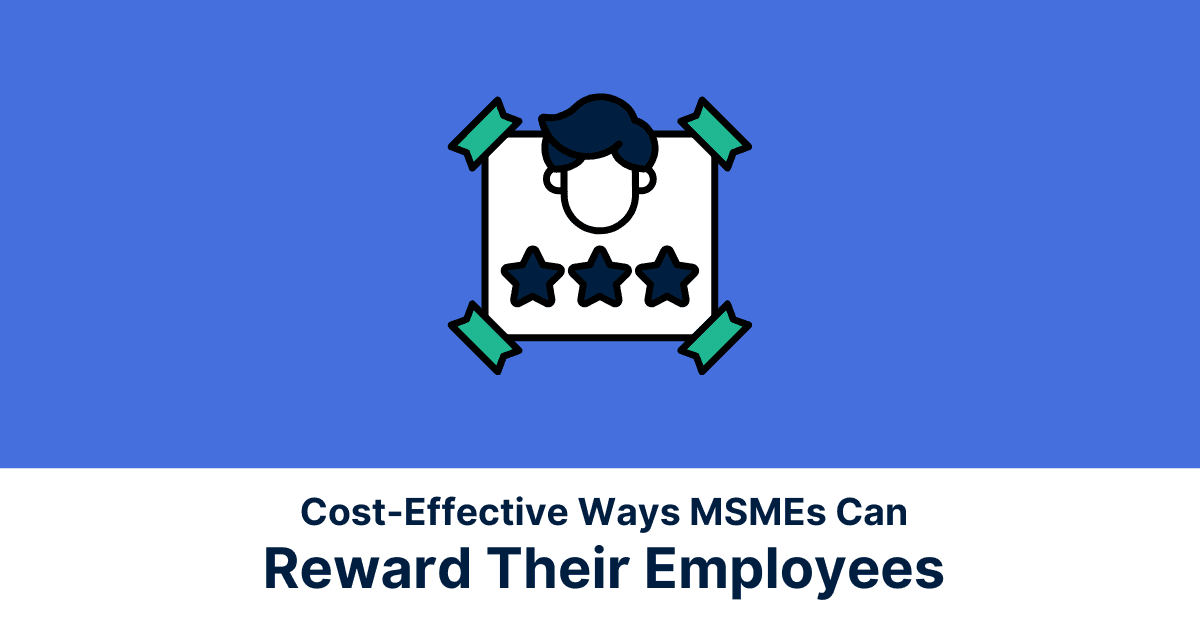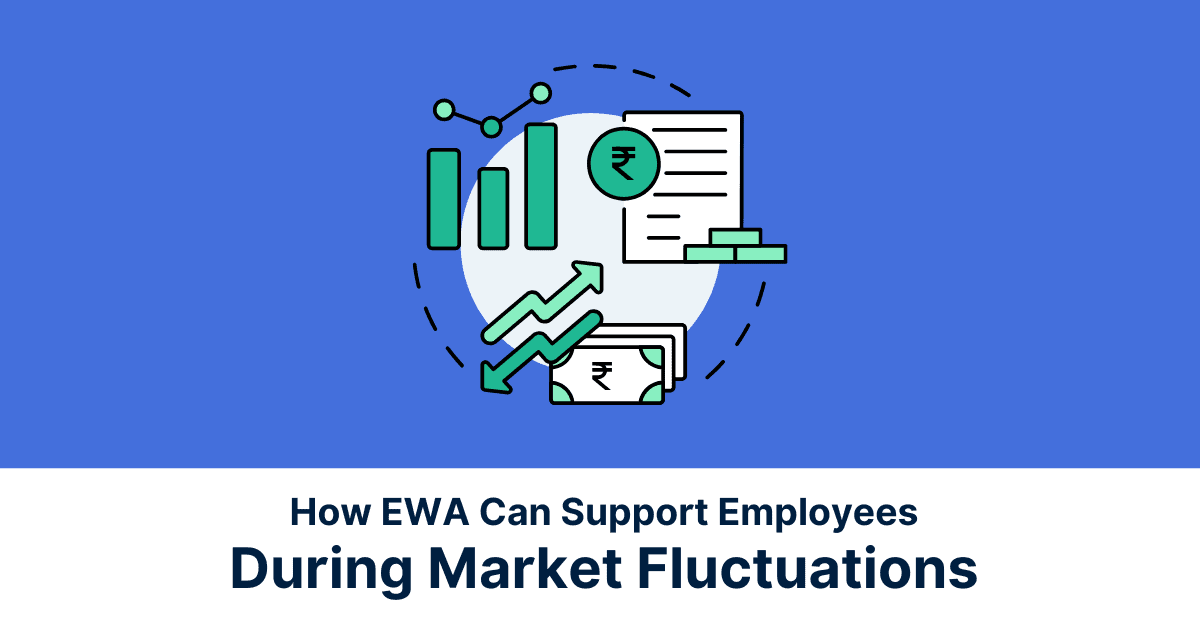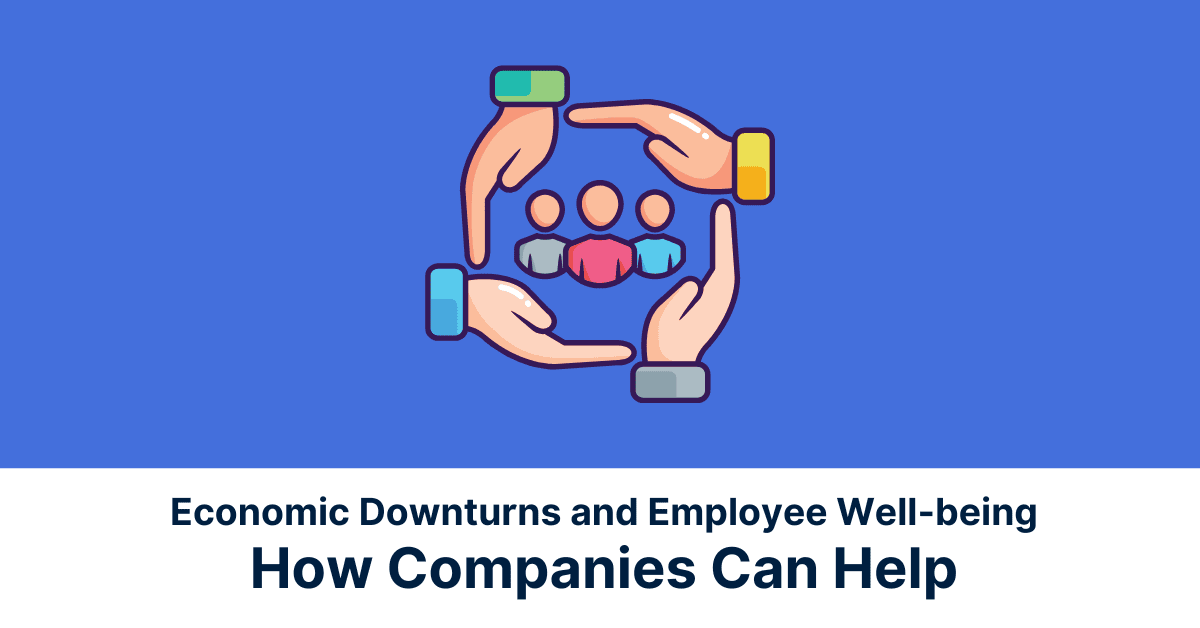Imagine payroll without the headaches – no more tedious manual entries or nail-biting compliance checks. AI is making this a reality, and it’s a game-changer for services like Earned Wage Access (EWA).
According to the IBM Global AI Adoption Index, 74% of Indian enterprises already working with AI have accelerated investments. By automating calculations and speeding up processes, AI is making it easier for employees to access their earned wages when they need them, all while keeping everything accurate and compliant.
The Evolution of Payroll: From Manual to AI-Driven Automation
Payroll management has evolved from labor-intensive manual calculations to highly efficient, AI-driven automation. Traditionally, payroll was managed through spreadsheets and paperwork, requiring extensive human effort to track employee hours, calculate salaries, deduct taxes, and ensure compliance. These manual processes were time-consuming, prone to errors, and often led to delays in salary disbursement.
The introduction of payroll software streamlined operations by automating calculations and improving accuracy. However, challenges such as regulatory compliance, real-time processing, and adapting to dynamic workforce needs persisted.
With AI-powered payroll management, businesses can now process payroll with unprecedented speed and precision. AI automates complex calculations, ensures compliance with tax regulations, and provides real-time data insights. It also enhances fraud detection and predictive analytics, enabling proactive decision-making.
In the context of Earned Wage Access (EWA), AI facilitates on-demand salary disbursement, allowing employees to access their earned wages instantly. This shift not only improves financial flexibility for workers but also reduces administrative overhead for employers.
How AI is Used in Payroll Automation
AI for Payroll Compliance & Fraud Detection
It’s fascinating how AI is changing the game for payroll compliance and fraud detection. Here’s a deeper dive:
- Detecting Anomalies: AI acts like a digital detective, scanning payroll data for unusual patterns—sudden overtime spikes, mismatched bank accounts, or ghost employees.
- Learning and Adapting: With continuous learning, AI improves fraud detection, making it harder for fraudsters to exploit loopholes.
- Real-Time Alerts: AI monitors payroll in real time, flagging suspicious activity instantly for quick action.
- Ensuring Compliance: AI keeps up with ever-changing tax laws and labour regulations, automatically adjusting payroll systems to stay compliant.
- Error-Free Calculations: AI ensures accurate tax deductions and payroll processing, reducing risks of penalties.
- Audit-Ready Records: AI maintains detailed transaction logs, simplifying audits and compliance checks.
Automated Payroll Processing
AI-driven payroll automation eliminates repetitive manual tasks, streamlining the entire payroll process. Traditional payroll involves time-consuming calculations, data entry, and compliance checks, often leading to errors and delays. AI simplifies these tasks by automatically processing employee salaries, tax deductions, and benefits with precision.
A study found that 39% of employees use AI to automate basic tasks, with leaders adopting AI at even higher rates (45%). With AI, payroll execution becomes faster and more efficient. It integrates seamlessly with attendance and HR systems, instantly calculating wages based on work hours, overtime, and bonuses. AI also handles direct deposits, ensuring timely salary payments without human intervention.
AI-powered payroll systems reduce administrative workload by automating compliance updates, minimising risks of tax miscalculations or missed deadlines. This not only improves accuracy but also enhances productivity, allowing HR teams to focus on strategic initiatives rather than routine payroll tasks.
Predictive Analytics for Payroll Optimization
AI-powered predictive analytics leverages historical payroll data to optimise expenses and improve cash flow management. By analysing past salary trends, workforce patterns, and seasonal fluctuations, AI can forecast payroll costs with high accuracy, helping businesses allocate resources efficiently.
AI identifies cost-saving opportunities by detecting trends in overtime, absenteeism, and compensation structures. It enables HR and finance teams to make data-driven decisions, such as adjusting staffing levels or restructuring payroll cycles to enhance financial stability.
AI also optimises cash flow by predicting when payroll funds will be needed, ensuring businesses maintain the right balance between liquidity and employee payments. In Earned Wage Access (EWA), AI helps determine safe withdrawal limits, preventing cash flow disruptions while providing employees with timely access to their earnings.
AI in Data Validation and Cleansing
AI is revolutionising payroll accuracy through its advanced data validation and cleansing capabilities. Traditional manual processes are prone to human error, leading to inaccuracies in salary calculations, tax withholdings, and employee data. AI-powered systems address these challenges by automatically scanning and validating payroll data before processing.
Leveraging machine learning, AI identifies anomalies like duplicate entries, incorrect tax codes, or mismatched employee records by comparing data against predefined rules and historical patterns. It flags inconsistencies for review, minimizing payroll discrepancies and reducing the risk of disputes or penalties. Beyond anomaly detection, AI also cleanses data by automatically filling in missing information and standardizing formats, ensuring records are accurate and up-to-date.
This proactive approach eliminates manual errors, improves efficiency, and guarantees employees receive correct and timely payments, fostering trust and compliance within the organisation. Essentially, AI acts as a meticulous quality control agent, ensuring payroll data is pristine before it’s processed.
AI for Tax Compliance and Reporting
AI is transforming tax compliance and reporting by automating crucial processes and minimising the risk of errors and penalties. Let’s look at the areas in which transformation is happening:
- Up-to-Date Tax Codes: AI systems stay current with the latest tax laws and regulations, ensuring compliance and minimizing the burden on businesses to track changes.
- Automated Tax Calculations: AI algorithms automatically calculate income tax, social security contributions, and other deductions, eliminating manual calculations and reducing errors.
- Automated Tax Reporting: AI automatically generates tax reports, streamlining the filing process and reducing reporting errors.
- Deduction and Credit Identification: AI identifies potential tax deductions and credits a business may be eligible for, minimizing tax liability and ensuring compliance.
- Reduced Risk of Penalties: By automating calculations and reporting, AI minimizes the risk of errors that can lead to penalties from tax authorities.
- Time and Resource Savings: AI frees up valuable time and resources previously spent on manual tax-related tasks, allowing businesses to focus on core operations.
- Improved Accuracy: AI significantly improves the accuracy of tax calculations and reporting, reducing the likelihood of audits and disputes.
- Proactive Compliance: AI helps businesses proactively stay compliant with changing tax laws and regulations, minimizing the risk of non-compliance.
AI in Time and Attendance Management
AI in time and attendance management, businesses can improve accuracy, reduce fraud, and enhance overall workforce efficiency. Let’s see how it’s done:
Biometric Integration: AI-powered systems use facial recognition, fingerprint scanning, and iris detection to accurately track employee attendance, eliminating buddy punching and fraudulent time entries.
Automated Data Syncing: AI integrates attendance data directly with payroll, reducing manual errors and ensuring accurate salary calculations.
Fraud Prevention: AI detects anomalies in clock-in and clock-out patterns, flagging irregularities such as duplicate entries or excessive overtime requests.
Optimised Shift Scheduling:
- AI analyzes historical data to predict workforce demand.
- Automatically assigns shifts based on employee availability, skills, and compliance requirements.
- Reduces last-minute scheduling conflicts and minimizes overtime costs.
Real-Time Monitoring & Alerts:
- AI tracks attendance in real time and alerts HR about unapproved shift swaps or excessive absenteeism.
- Helps maintain workforce discipline and ensures compliance with labor laws.
Increased Productivity & Employee Satisfaction:
- Ensures fair scheduling, reducing burnout and improving work-life balance.
- Enhances operational efficiency by optimising workforce allocation.
AI as a ‘Virtual Employee’ in Payroll
Imagine a diligent, tireless employee dedicated to payroll – that’s essentially what AI becomes in this context. AI-powered assistants act as “virtual employees” handling various payroll tasks, significantly reducing the need for manual HR intervention.
Here’s how:
- Data Entry and Validation: AI can automatically collect employee data from various sources (timesheets, HR systems, etc.) and validate it for accuracy, eliminating manual data entry and reducing errors.
- Payroll Processing: AI algorithms calculate wages, taxes, and deductions, generating payslips and initiating payments without human intervention.
- Answering Employee Queries: AI-powered chatbots can address common employee questions about payroll, benefits, and taxes, freeing up HR staff to focus on more complex issues.
- Compliance Monitoring: AI keeps track of changing tax laws and regulations, ensuring payroll processes remain compliant without constant manual updates.
- Reporting and Analytics: AI can generate payroll reports and provide insights into payroll trends, helping businesses make informed decisions.
AI-Powered Employee Self-Service and Chatbots
From payslip requests to tax updates, AI chatbots provide 24/7 support, making payroll information readily available to employees. Let’s take a look how:
- Instant Payroll Assistance: AI chatbots provide real-time answers to employee queries about salary calculations, deductions, and payment schedules.
- Automated Payslip Requests: Employees can request and receive digital payslips instantly through AI-driven self-service portals, reducing manual HR intervention.
- Tax & Compliance Updates: AI chatbots keep employees informed about tax changes, deductions, and compliance requirements, ensuring transparency.
- Leave & Attendance Integration: Employees can check leave balances, request time off, and verify attendance records through chatbot interactions.
- 24/7 Availability: Unlike human HR teams, AI chatbots offer round-the-clock assistance, ensuring employees get support anytime.
- Reduced HR Workload: By handling repetitive payroll and tax-related queries, AI frees up HR professionals to focus on strategic tasks.
- Seamless Integration: AI-powered chatbots integrate with payroll systems, providing accurate and up-to-date information without delays.
Integrating AI with Earned Wage Access (EWA)
Real-Time Salary Disbursement with AI
AI-powered Earned Wage Access (EWA) enables employees to access their earned wages instantly without disrupting payroll cycles. Traditional payroll systems follow fixed pay periods, often causing financial strain on employees needing immediate funds. AI bridges this gap by analysing work hours, attendance, and payroll data in real time to determine the amount an employee can withdraw safely.
By automating calculations and approvals, AI ensures seamless salary disbursement without affecting cash flow or payroll accuracy. It also monitors withdrawal patterns and suggests responsible usage to prevent financial strain. Additionally, AI integrates with banking systems to enable instant transactions, providing employees with quick access to funds when needed.
With AI-driven EWA, businesses enhance employee financial wellness, reduce dependence on payday loans, and improve overall job satisfaction—all while maintaining payroll integrity and compliance.
Fraud Prevention in EWA Using AI
AI is a powerful ally in the fight against fraud within Earned Wage Access (EWA) programs. Here’s how it detects suspicious transactions and prevents misuse of on-demand salary features:
- Anomaly Detection: Machine learning algorithms identify irregularities such as excessive withdrawals, duplicate requests, or transactions outside normal working hours.
- Real-Time Transaction Monitoring: AI continuously analyzes Earned Wage Access (EWA) transactions, flagging any unusual withdrawal patterns or suspicious activity.
- User Authentication: AI integrates with biometric verification and multi-factor authentication to ensure only authorized employees access their earned wages.
- Behavioral Analysis: AI tracks employee withdrawal habits over time, detecting deviations that may indicate fraud or system misuse.
- Limits & Thresholds: AI sets dynamic withdrawal limits based on work hours, salary, and previous withdrawal trends, preventing financial overextension.
- Instant Alerts & Intervention: Suspicious transactions trigger immediate alerts to HR and payroll teams, enabling quick action to prevent fraud.
AI for Managing Cash Flow in EWA
AI plays a crucial role in ensuring smooth salary advances by analyzing payroll trends and predicting fund availability. By examining historical payroll data, employee withdrawal patterns, and overall financial health, AI helps businesses maintain sufficient liquidity for Earned Wage Access (EWA) requests without disrupting regular payroll cycles.
Machine learning models anticipate peak withdrawal periods and optimise fund allocation, preventing cash shortages. AI also assesses financial risks by monitoring withdrawal behaviors and company cash flow, ensuring that salary advances remain sustainable.
Additionally, AI-powered systems automate fund distribution, dynamically adjusting available reserves based on real-time revenue and expenses. Businesses receive instant alerts on potential cash flow issues, allowing them to make informed financial decisions and avoid liquidity crises. By integrating AI into cash flow management, companies can offer employees secure and timely access to their earned wages while maintaining financial stability.
Current Trends in AI-Driven Payroll Solutions
A Gallup survey of 135 CHROs found that 65% believe AI can enhance performance across most roles in their organization. AI is shaking up how we handle payroll, making things way more accurate, efficient, and compliant. Think of it like having a super-smart assistant that can answer all those tricky payroll questions, automatically calculate taxes, and even keep up with the ever-changing rules. These AI-powered helpers are available instantly, so employees get the support they need, and HR gets a much-needed break.
One of the coolest changes is real-time payroll. Imagine getting paid the moment you earn it! AI makes this possible, which is a huge deal for things like Earned Wage Access (EWA). No more waiting for payday – you can access your earnings when you need them. Plus, AI is like a hawk when it comes to spotting fraud. It can sniff out suspicious transactions and keep things secure.
Beyond the day-to-day stuff, AI is also helping businesses plan for the future. It can predict payroll costs, track overtime, and even suggest ways to improve compensation. And with AI-powered time tracking, those manual timesheets are a thing of the past.
The future of payroll looks even brighter, with things like blockchain for added security, AI-driven benefits, and even deeper workforce insights on the horizon. Businesses that embrace AI in payroll aren’t just saving time and money – they’re making their employees happier and staying ahead of the compliance game.
The Future of Payroll: What to Expect
The future of payroll is set to be transformed by two key trends: AI-driven workforce automation and blockchain payroll solutions. AI will take on increasingly complex tasks, going beyond basic calculations to manage entire payroll workflows. Expect AI to handle everything from onboarding new hires and automatically setting up their payroll to predicting staffing needs and optimizing labor costs. Think personalised payroll experiences, where AI anticipates employee needs and proactively offers relevant information.
Blockchain technology will bring enhanced security and transparency to payroll. Imagine tamper-proof payroll records, instant cross-border payments, and decentralised payroll systems that reduce reliance on intermediaries. Smart contracts could automate complex payroll processes, like bonus payouts or commission calculations, ensuring accuracy and speed. While still emerging, blockchain has the potential to revolutionise how we think about payroll security and efficiency.
These trends will converge to create a future where payroll is seamless, secure, and highly automated.
Conclusion
AI is no longer a futuristic concept in payroll—it’s a present-day necessity. From automating tedious tasks and boosting accuracy to preventing fraud and ensuring compliance, AI is reshaping the entire payroll landscape. It empowers employees with instant access to information and earned wages, while simultaneously freeing up HR to focus on strategic initiatives. The rise of real-time payroll, AI-driven insights, and even blockchain integration signal a clear shift towards a more efficient, secure, and employee-centric payroll future.
Employers who embrace AI-powered payroll solutions aren’t just improving their bottom line; they’re gaining a competitive edge by attracting and retaining top talent, minimizing risk, and optimizing their workforce strategy. The message is clear: adopt AI in payroll now, or risk falling behind.
*Disclaimer:
The information contained herein is not intended to be a source of advice concerning the material presented, and the information contained in this article does not constitute investment advice. The ideas presented in the article should not be used without first assessing your financial situation or without consulting a financial professional.
